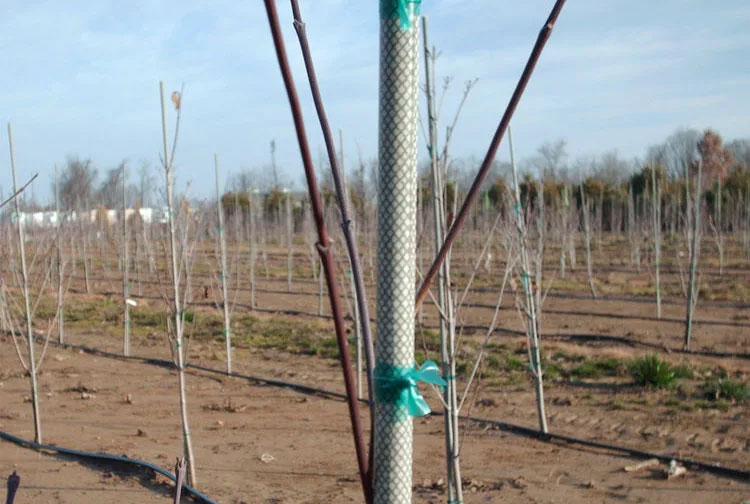When planting a young tree, providing adequate support is essential for its healthy growth and development. Tree supports help protect young trees from wind, heavy snow, and other environmental stressors that can cause damage or uprooting. Traditionally, wooden stakes have been the go-to choice for tree support. However, in recent years, fiberglass tree supports have gained popularity due to their superior properties. In this article, we will delve into the pros and cons of both fiberglass and traditional tree supports to help you make an informed decision for your trees.
Fiberglass Tree Supports
Fiberglass tree supports are made from a composite material that combines glass fibers with a resin. This combination results in a strong, lightweight, and durable product.
Pros:
Durability: Fiberglass tree supports are resistant to rot, decay, and insects, ensuring a longer lifespan compared to wooden stakes.
Flexibility: Fiberglass supports can bend without breaking, allowing for natural tree movement and reducing the risk of girdling.
Strength: Fiberglass offers excellent tensile strength, providing reliable support for young trees.
Lightweight: Fiberglass supports are easier to handle and install compared to wooden stakes.
Corrosion Resistant: Fiberglass is not susceptible to rust or corrosion, making it ideal for outdoor use.
Long-lasting: With proper care, fiberglass tree supports can last for many years.
Cons:
Cost: Fiberglass tree supports are generally more expensive than wooden stakes.
Environmental Impact: The manufacturing process of fiberglass can have environmental implications.
Traditional Tree Supports
Wooden tree stakes have been used for centuries to support young trees. They are typically made from durable hardwoods like oak or cedar.
Pros:
Cost-effective: Wooden stakes are generally more affordable than fiberglass supports.
Readily available: Wooden stakes are easy to find at most garden centers and hardware stores.
Cons:
Durability: Wood is susceptible to rot, decay, and insect damage, requiring frequent replacement.
Rigidity: Wooden stakes can be rigid, which may restrict tree movement and lead to girdling.
Environmental impact: The use of treated wood can introduce chemicals into the soil.
Fiberglass vs. Wood: A Comparative Analysis
| Feature | Fiberglass Tree Supports | Traditional Tree Supports |
| Durability | Highly durable, resistant to rot and decay | Susceptible to rot, decay, and insect damage |
| Flexibility | Flexible, allows for natural tree movement | Rigid, can restrict tree movement |
| Strength | High tensile strength | Moderate strength |
| Weight | Lightweight | Heavier |
| Cost | Higher | Lower |
| Environmental impact | Higher manufacturing impact | Potential for chemical runoff from treated wood |
| Lifespan | Long-lasting | Shorter lifespan |
When to Choose Fiberglass Tree Supports
Long-term support: If you want a long-lasting and low-maintenance solution, fiberglass tree supports are an excellent choice.
Harsh climates: Fiberglass supports are well-suited for areas with extreme weather conditions, as they are resistant to rot and decay.
Valuable trees: For high-value trees, the added durability and longevity of fiberglass supports can be a worthwhile investment.
When to Choose Traditional Tree Supports
Budget-conscious: If cost is a primary concern, wooden stakes may be a more affordable option.
Temporary support: For temporary support needs, wooden stakes can be a suitable choice.
Conclusion
The choice between fiberglass and traditional tree supports depends on several factors, including budget, climate, and the specific needs of your trees. While fiberglass tree supports offer superior durability, flexibility, and longevity, wooden stakes remain a cost-effective option for many applications. By carefully considering the pros and cons of each type of support, you can make an informed decision to ensure the healthy growth and development of your trees.
Additional Tips:
Proper installation: Regardless of the type of support you choose, proper installation is crucial for optimal results.
Regular inspection: Periodically inspect your tree supports for signs of damage or wear.
Remove supports when no longer needed: Once your tree is established, remove the supports to prevent girdling.
By following these guidelines, you can provide your trees with the support they need to thrive.
 +86 15303735673
+86 15303735673 Jessica@frpzs.com
Jessica@frpzs.com
 Technical Data
Technical Data












